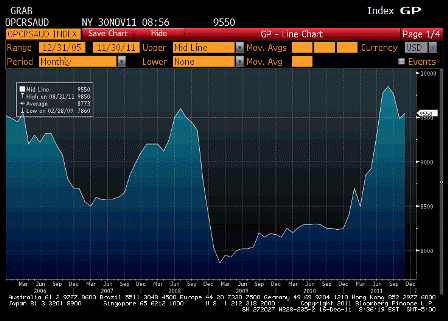He could start by lowering his posted prices…
Saudi’s Naimi says determined to bring down oil prices
By Meeyoung Cho
April 13 (Reuters) — Top oil exporter Saudi Arabia is determined to bring down high oil prices and is working with fellow OPEC members to accomplish that, Oil Minister Ali al-Naimi said on Friday.
Brent crude has risen about 13 percent this year, trading above $120 a barrel on Friday, threatening a nascent recovery of the global economy. Oil has traded above $100 for all but a couple of days in the past year.
“We are seeing a prolonged period of high oil prices,” Naimi said in a statement during a visit to Seoul. “We are not happy about it. (The Kingdom of Saudi Arabia) is determined to see a lower price and is working towards that goal.”
The influential Saudi oil minister earlier this year identified $100 a barrel as an ideal price for producers and consumers earlier this year.
Concern of a supply shortage due to production problems in some producing countries and as U.S. and European sanctions target exports from OPEC’s second-largest producer Iran have helped keep Brent crude well above that mark.
Naimi reiterated that there were no supply shortages in the global oil market and the kingdom stood ready to use its spare production capacity if necessary.
Saudi Arabia is pumping 10 million barrels per day, he said. Output at that level would be the highest since November, when the kingdom produced more oil than it had done for decades. Naimi reiterated that production capacity stands at 12.5 million bpd.
“The story is one of plenty,” he said. “Supply is not the problem.”
Fellow OPEC producers Libya, Iraq and Angola have increased output, Naimi said. Non-OPEC members including Canada, the United States and Russia had also boosted supplies, he added.
Saudi stockpiles at home and abroad were full, he added. Inventories in industrialized countries were also filling up, he said.
“Fundamentally the market remains balanced — there is no lack of supply,” he said.
The International Energy Agency said on Thursday that the oil market had broken a two-year cycle of tightening supply conditions as demand growth weakens and top exporter Saudi Arabia increases output.
The agency, which advises industrialized nations on their energy policies, said increased supply and slowing demand growth might already point to a significant rise in global oil stocks.
Stubbornly high oil prices could be expected to ease when markets woke up to the shift in trend, it added.


